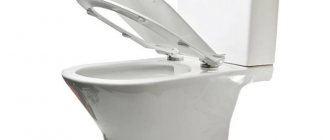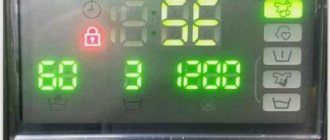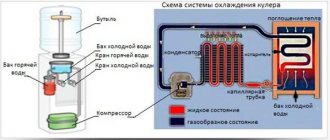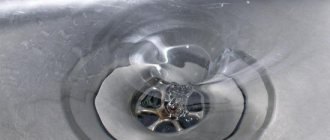One of the reasons for toilet failure is water leakage from the cistern. The nature of this phenomenon has various causes, but in most cases you can eliminate water leakage yourself by carrying out repairs on your own. Indeed, in most cases, malfunctions are of a typical nature, which allows you to quickly find the problem and promptly fix it.
| 1. Water flows in the toilet after filling the tank 2. Water flows into the toilet after flushing 3. The tank leaks in the places where the bolts are attached 4. Leaks between the toilet and the tank mount 5. The tank flows on the sides or from the bottom to the floor 6. The toilet tank leaks from button 7. What should I do to prevent the tank from leaking? |
Water flows in the toilet after filling the tank
The design of toilet flush tanks is based on the principle of filling the vessel with tap water until the water supply valve is activated, which blocks its flow into the tank.
One of the safety devices in this system is the overflow mechanism: when the tank is filled, if the shut-off valve does not operate and water continues to flow into the cavity, the excess volume of water flows by gravity into the toilet. The situation when, for some reason, the inlet valve does not close is not the most critical, unless you take into account that even with the toilet not working, water consumption increases to an average of 100 liters per day.
The reasons for water overflow can be:
Incorrect adjustment of the float mechanism of the flush tank
Overflow due to improper adjustment of the float mechanism is the most common problem in flush tanks. The float chamber, pushed by the volume of water through a metal rod or plastic guide, presses on the valve and thus stops the flow of liquid into the tank. If the metal guide is bent or the adjustment screw on the plastic guide is loosened, the float chamber moves and the supply valve simply does not shut off the supply.
The method to solve the problem is simple: remove the tank lid and adjust the position of the float relative to the upper water level. For most toilets, the float is adjusted so that the water level does not reach the overflow neck by 1-1.5 cm.
Float chamber malfunction
If the float is damaged, the supply valve simply does not close. A float filled with water does not float up and thus the supply valve is simply constantly in the open position.
The simplest repair method is to replace the float or drain the water from it and seal the leak.
Water supply valve diaphragm malfunction
For diaphragm water supply valves, the supply is closed by pressing the plastic rod onto the rubber membrane, while the supply hole on the reverse side is tightly blocked by the rubber. Over time, a groove forms on the rubber at the inlet hole, through which water first begins to simply seep through, and after a while it simply flows unhindered into the tank. The repair method is membrane replacement.
Drain mechanism malfunction
This problem begins to manifest itself gradually when the tank itself, after a certain time, begins to fill with water. In this case, it is necessary to disassemble the drain mechanism, clean it of deposits and change the rubber seals.
Poor water quality
The reason for the tank overflowing is often associated with poor-quality tap water - a large amount of iron oxide, lime or mechanical inclusions form a coating on the walls and mechanisms, which over time acts on the rubber seals as an abrasive, literally eating the surface. In this case, it is necessary to install a filter system and replace rubber gaskets, membranes and seals.
How to fix a leak
To begin the repair, you need to prepare the toilet. Before the procedure, be sure to turn off the water supply by tightening the riser valve. The plumbing fixture unscrews the drain button, carefully lifts the lid and puts it aside. Further actions depend on the problem.
Tank is full
When the tank is filled, the compensating device constantly drains moisture. To determine if it is broken, you need to lightly hold the float with your fingers. If, when raised a couple of centimeters, the liquid continues to flow, then the problem is hidden in the module. If damaged or low installed, the part will not function properly. You can correct the position by bending the lever.
If moisture oozes out after lifting the float, then you need to carefully examine the valve. The fixing pin must be smooth, without deformation or corrosion. In operating mode, the part stands inside the structure and holds the lever. It is better to replace a failed element with a new one, or, in extreme cases, with large copper wire.
Finding the problem when it breaks Source saucyintruder.org
If there is no damage to the stud visible to the naked eye, we recommend checking the hole with which the component comes into contact. Moisture can leak when the well is deformed. The solution to the problem is to replace the valve mechanism.
If liquid flows into the toilet after flushing, then it is worth checking the seals. Carefully press the rubber gasket against the valve, trying to achieve maximum sealing tightness. If there is no leak, adjust the fit of the elastic part or replace it with a working one.
Water flows into the toilet after flushing
The problem associated with water leakage after flushing occurs both in old-style systems with cast-iron wall-mounted tanks and in new “compact” systems. The reason for this phenomenon is the improper operation of the flushing mechanism.
When you press a key or button, water is discharged and the drain hole opens as wide as possible. At this time, the locking and adjusting mechanisms are in a suspended state - when the button is pressed, the valve or weight with the gasket cannot lower, but as soon as the button is released, the mechanism returns to the lowest position and closes the drain neck.
A sudden release of the button causes the locking mechanism to move along the guides under the influence of the water flow. At the same time, the deterioration of plastic parts becomes more and more visible, this leads to distortions and “freezing” of the mechanism itself. The result of such a defect is the following: the drain neck is skewed and incompletely closed; the water entering the tank is simply immediately drained into the toilet.
The method of troubleshooting is to completely replace the drain mechanism and then adjust its operation:
One of the additional causes of the problem may be increased water hardness and the natural aging processes of plastic.
Required tools and materials
If your plumbing is leaking, you must turn off the water before making any repairs. Due to the fact that the liquid is supplied to the system under pressure, in the process of troubleshooting we can flood the premises. For repairs you will need the following tools:
- sealant suitable for plumbing fixtures;
- sandpaper;
- screwdriver;
- burlap, twine or tow;
- hammer;
- knife;
- pliers;
- If it is necessary to replace a component, a working part of a certain type will be required.
When the necessary tools have been collected, you can begin to carry out repair work.
The tank is leaking where the bolts are attached
Installation of compact type toilets is carried out using a bolted connection between the tank and the toilet. In this case, the most common bolts are made of metal with a zinc coating to protect against corrosion. Rubber gaskets and universal silicone sealant are used as sealing. In more expensive models, the bolts may be made of brass or bronze, but in most cases it is galvanized metal, which is still susceptible to corrosion.
Leakage at bolted joints begins with a small amount of water seeping in, and gradually the leakage will increase. The following can be suggested as preventive measures:
- Shut off the water supply.
- Drain the water from the tank.
- Carefully loosen the thread.
- Remove the bolts.
- Remove rubber gaskets.
- Clean the surface of the rubber gaskets from silicone and dry them.
- Clean the ceramic surfaces where the bolts are installed.
- Apply a layer of silicone sealant and install rubber seals.
- Again treat the seat of the bolted connection with silicone, install the bolts, add 2-3 metal washers from below and tighten the connection with a nut.
If the leak cannot be stopped, the entire fastening system must be replaced, from bolts to rubber seals. In this case, there is no point in trivializing; everything needs to be changed.
Self-repair or inviting a specialist?
Most of the problems that result in the toilet leaking from below after draining the water or other difficulties arise can be easily solved independently. This requires only minimal skills in working with tools (wrench, screwdriver, sealant) and an understanding of the device diagram. The diagram is usually supplied complete with a compact toilet; in addition to the names of the parts, it indicates the assembly sequence.
By saving the diagram and assembly instructions, you can disassemble the tank fittings at any time and fix the problem.
Important: if you need to replace parts, it is advisable to contact a specialized store (construction market sellers), having in hand this part, a description of the malfunction and the exact name of the toilet model (cistern). In this case, the correct choice of structural element is more likely.
By inviting a technician, the bathroom owner gets rid of the need to personally find out the cause of the leak, look for a replacement part, or repair the device. However, the called specialist does not necessarily come immediately and cannot always immediately understand the problem. In addition, the work of the master must be paid.
Thus, depending on your own qualifications and self-confidence, the question of how to fix a leak in the toilet is decided in favor of calling a specialist or doing the repair yourself.
Leak between the toilet and the cistern mounting
At the junction of the toilet tank itself, a leak can be the result of several defects:
- incorrect installation of the tank on the toilet;
- failure of the rubber seal;
- defect of the tank and (or) toilet.
A leak at the installation site due to a violation of the installation technology may occur due to:
- improper installation of the rubber gasket;
- the fit between the tank and the toilet is not tight enough;
- aging rubber seal.
Installation of compact type toilets with a flush cistern attached to the toilet is done by installing a rubber gasket between the toilet and the cistern. The gasket is pressed tightly with bolts. A distortion made during installation will certainly lead to a violation of the tightness of the gasket and the beginning of water leakage when the tank is full.
In models where there is a ceramic cistern pipe that fits into the toilet opening, leakage due to a leaky gasket is unlikely. Most likely, the appearance of water here is due to a crack in the body of the pipe or tank. For some time, you can seal the crack with silicone or silicate (office) glue. But this is only a temporary measure for 2-3 months; in the future, the operation will have to be repeated more and more often. Therefore, it is recommended to immediately start looking for a new tank or completely replace the entire set.
Signs of leakage
When flushed, the liquid enters the bowl for some time and cleans it of waste residues. Everything is normal if soon after descent the flow stops and no sound of water is heard. The problem is indicated by constant noise in the tank and a stream flowing into the bowl.
Before searching for a breakdown and repairing the tank, determine the presence of a leak. Signs of leakage are:
- constant murmur of water after filling the tank;
- the formation of rusty smudges in the place where the liquid passes into the bowl;
- humidity of the inner surface of the toilet near the tank all the time;
- long flush with low pressure;
- formation of condensate on water pipes or on the tank.
Important! Condensation settles due to the continuous flow of cold water. As a result, the pipe does not have time to heat up and drops appear on it. If flushing is carried out periodically, the water has time to warm up to the optimal temperature.
In some cases, a constant leak is observed due to the accumulation of dirt inside the tank. Then, after completely shutting off the water, the inner surface is cleaned with a brush and detergents. If this measure does not help, the cause of the leakage is a breakdown. Then the drain mechanism is disassembled and repaired or replaced with a new one.
The tank leaks from the sides or from the bottom to the floor
Quite often, a tank leak is confused with the presence of condensation on its surface. Filling a container with cold water in a room at normal room temperature automatically causes dew drops to appear on the outer walls. It’s another matter when marks characteristic of a constant flow are visible on the sides. Rusty or calcareous marks left after water flow indicate a defect in the internal mechanism or cracks in the ceramic bowl itself.
Problems associated with the presence of traces of leaks can be classified as follows:
- presence of traces of water jets from technological holes;
- traces starting below the holes, appearing in places of microcracks;
- presence of traces at the bottom of the tank.
In the first case, when water simply overflows through the technological holes, the cause of the defect may be a malfunction of the overflow mechanism or the absence of a special hose attached to the filler pipe.
If the mechanism malfunctions, water overflows and finds a place to exit through the mounting holes. Solving the problem is quite simple - adjust the mechanism, check the drain neck and install plugs on the unused hole for connecting the hose.
A fallen tube on the inlet pipe of the valve is not a critical malfunction; simply, under the pressure of water, a large amount of splashes with an unpredictable trajectory is formed in a confined space, as a result of which a certain amount of water simply splashes out. Flaw correction method:
- Shut off the water supply.
- Remove the cover.
- Place the fallen pipe onto the pipe and secure it with a clamp.
If the ceramic or plastic bowl of the tank is mechanically damaged, a leak may occur on the walls at the fracture site. It is useless to repair visible cracks that threaten the integrity of the structure; the constant process of filling and draining water systematically affects the walls and breaks the seam, no matter how strong it may be. In this case, you just need to replace the tank.
If no visible cracks are visible, but water seepage still occurs, it is recommended:
- Shut off the water supply.
- Drain the water from the tank.
- Mark places where water leaks.
- Dry the tank outside and inside.
- Using silicone sealant or silicate glue, treat microcracks inside and outside the walls.
- After finishing the treatment, fill the tank with water.
Filling microcracks with sealing compounds will ensure sealing of the walls for a fairly long period, but this is provided that the walls are not subject to mechanical stress that can turn microcracks into real faults.
Tanks with bottom hose connections most often leak at the hose connection. The defect can be eliminated by tightening the hose nut on the fitting or removing the hose and reinstalling it using fum tape or tow.
Tank device
To fix a toilet tank if it is leaking, it is useful to know the principle of its operation, the purpose and design of the internal fittings.
There are two types of flush tanks based on the water supply points - from the side (old classic models) and from the bottom on the right or left (mostly modern modifications, devices with installation); the type of locking mechanism for the water supply often depends on the design. With lateral supply, the float is secured to a metal pulley or vertical column connected to a shut-off piston. In a design with bottom water supply, a lightweight plastic cup is used that moves along a vertical rod.
The internal components of any toilet cistern according to their functional purpose can be divided into the following groups:
Automatic filling system
One of the designs is a fitting with a noise-reducing tube at the end, through which water flows into the toilet, the inlet of which is blocked by a valve. The valve is connected by means of a rod to a plastic float, which, when the tank is filled with water, rises and moves the piston that locks the channel.
In other more modern types of locking mechanisms, when the tank is filled with water, a float connected by a lever to a locking piston rises along the rod, thus blocking the inlet channel.
Design of toilet fittings with side and bottom connections
Overflow protection unit
To protect against overflow of water, any toilet bowl has a funnel built into the body (shut-off column) with an outlet into the pour hole. When water begins to overfill the tank, it flows into the overflow unit and then drains into the bowl.
Drain system
The drain assembly includes a button that, when pressed, raises the sealed shut-off valve in the drain channel and directs water flow into the bowl. The release valve itself is connected to the button through a system of plastic ties with a lever, that is, when you press the button, it rises up.
The design of the drain units provides for adjustment of the height of the float rise - this allows you to set the degree of filling the tank with water. In older side-inlet systems, the water level could be adjusted by bending the brass rod that held the float.
In modern models, the pear is moved along the axis of the rod, or if the holder is made of a composite plastic rod, the latter is folded, fixing the joint with a clamping bolt. In models with bottom supply, the lifting height of the glass is set by fastening it in the desired position on a plastic tie, which has the form of a ribbed strip and is connected to a lever that moves the locking piston.
Also in the drain assembly there are similar adjusting plastic strips with ribs, which allow you to change the distance of the button placement relative to the shut-off valve - this is necessary for installing shut-off and drain valves in tanks of different heights. That is, after installing the flush assembly, they put the toilet lid in place, and if the button does not reach the top hole or rests against it, it is rearranged by moving the flush valve along the ribbed guides.
The design of modern shut-off valves for toilets provides the ability to drain water in normal (4 - 6 l) and economical half (2 - 3 l) modes. To do this, install a two-part button with the corresponding symbols.
Units of modern shut-off and bleed valves
Leaking toilet cistern with button
Models equipped with a button, in addition to all the listed diseases, may have another problem unique to them - the development of the mechanism and the weakening of the release spring.
The appearance of this defect is associated with the mechanism of operation of the drainage system - when you press the button, the drainage process begins, the button is restored to its original position after the mechanism has completely drained the water and released the spring.
Solving the leakage problem in this case is quite simple:
- Shut off the water supply.
- Remove the cover.
- Adjust the mechanism and slightly stretch the spring.
- After this, check the functionality of the mechanism and, if necessary, make adjustments again.
Reasons causing the problem
There are several reasons that can cause the problem of water constantly running in the toilet. To eliminate the consequences, it is imperative to understand what is going on.
Focus on the following:
- Damage to the design of the tank itself. This is the most common reason for continuous drainage of water. The design of the tanks is not that complicated, but each element must be maintained in good condition. Most often, problems arise with water shut-off valves. In this case, the water constantly rises, there is so much of it that it finds a natural outlet. The problem is dangerous because the liquid can not only flow down the standard channel, but also pour out over the edges of the tank.
- Damage to the tank itself. Cracks may form in containers for various reasons. They cause constant water leakage.
- Malfunctions in the bowl, in the drainage area. To eliminate the problem, it is necessary to carefully examine not only the tank, but also the other components of the overall structure. There will definitely be problems in one of the nodes.
Having found the cause of the problem, it is necessary to carry out repairs, eliminating the consequences. Each individual case has its own method of dealing with problems.
What should I do to prevent the tank from leaking?
There are few recommendations in this case. First of all, you need to install the toilet correctly and be sure to secure it with mounting screws. A skewed toilet or a toilet with play will itself cause leaks in connections and gaskets.
The second point is related to the need to use modern means of cleaning the tank. Chemical agents allow you to remove lime and rust deposits, which means the mechanism will work longer.
The third thing worth remembering is the need to promptly replace them at the first signs of destruction of rubber gaskets.
A leaking toilet tank is a common problem that has many causes. Finding out why the breakdown occurred and then trying to fix it is the correct sequence of actions.
Preventive measures against leakage
To prevent a leak in the toilet from occurring at the most inopportune moment, it is worth monitoring the condition of the tank fittings and regularly carrying out preventive measures.
The main and at the same time the simplest thing is to clean all parts, as well as the internal surfaces of the tank. Upon careful examination, you will notice that even in a short time the walls and bottom are covered with a red coating, mineral deposits and even a substance similar to silt. The composition of contaminants depends on the quality of the water.
To minimize the entry of various contaminants into the tank, the internal wiring must be equipped with filters. They are installed on the cold water supply next to the riser
From time to time it is advisable to check the condition of the sealing elements, fasteners and parts that are located at the joints in order to anticipate the occurrence of a strong leak. A small amount of moisture indicates that the connection is leaking. Accordingly, you need to tighten the nuts or replace the seal.
Timely minor repairs and regular cleaning will save you from leaking water into the toilet, and therefore from unnecessary costs. An important factor that ensures saving water, clogging and breakdowns is the correct setting of the fittings, the specifics of which we recommend that you familiarize yourself with.
The toilet is leaking - what to do?
Once a leak is discovered, something needs to be done. On the one hand, you can turn to specialists for help who, having the necessary knowledge and experience, will quickly determine the cause of the leak and eliminate it. But they will demand money for the work. On the other hand, if you don't want to pay, then roll up your sleeves and get to work. This article was written for you, adherents of independent repair work.
And remember! The work of a professional plumber today costs almost as much as the toilet itself.
First of all, turn off the water. Make sure to do this, because otherwise additional difficulties may arise. The water enters the tank under pressure, and if something breaks, don't be surprised when it starts gushing out in the middle of the room. Your next step will be to find the faulty toilet part. This will require patience and several working tools.
The toilet is leaking
Frequent problems due to which water constantly leaks from the drain tank
Faults that cause water to leak:
- Water flows non-stop from the water supply pipe.
- Water flows in a small stream into the drain bowl.
- Draining from the tank occurs only after much torment with a lever or button.
- The lever or button does not respond at all.
- Leaks and puddles form near the toilet.
- The tank is filling with an unusual loud noise.
How to change the cartridge in the mixer?
Which bathtub is better - acrylic or cast iron?How to clear a clog in the sink?











